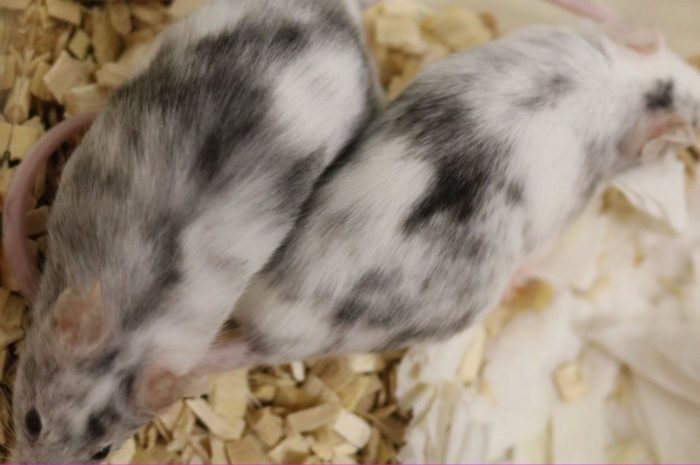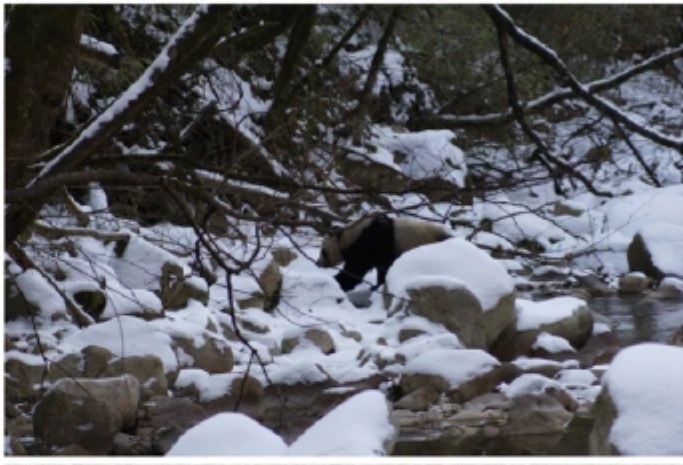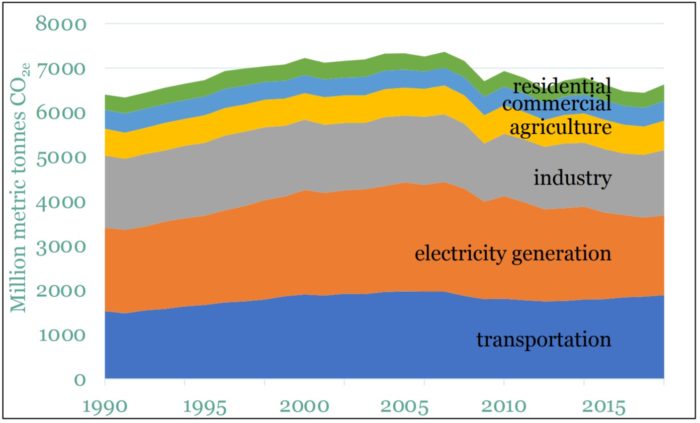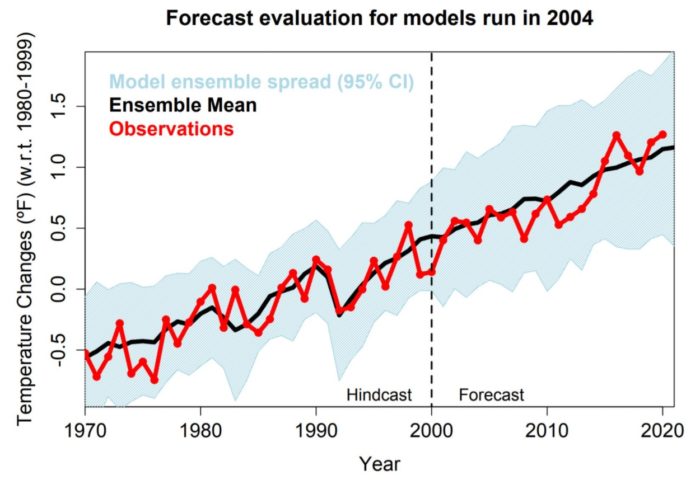Jan
10
2022
 Perhaps the greatest challenge of current theoretical physics is to come up with a testable theory that unites the principles of general relativity with quantum mechanics. This has proven to be a very challenging problem, one that may take generations of physicists to crack. Right now physicists are mostly stuck in the theoretical realm, trying to come up with theories (like string theory) that may be internally mathematically consistent, but are challenging to falsify experimentally. However, Rana Adhikari, professor of physics at Caltech, and her colleagues are trying to come up with a way to do just that. Their approach derives from another weird concept within theoretical physics – that the universe may be pixelated, and may even be a hologram (three dimensions projected from a two dimensional surface).
Perhaps the greatest challenge of current theoretical physics is to come up with a testable theory that unites the principles of general relativity with quantum mechanics. This has proven to be a very challenging problem, one that may take generations of physicists to crack. Right now physicists are mostly stuck in the theoretical realm, trying to come up with theories (like string theory) that may be internally mathematically consistent, but are challenging to falsify experimentally. However, Rana Adhikari, professor of physics at Caltech, and her colleagues are trying to come up with a way to do just that. Their approach derives from another weird concept within theoretical physics – that the universe may be pixelated, and may even be a hologram (three dimensions projected from a two dimensional surface).
For background, prior to the 19th century we comfortably lived in what we now call a classical universe. Our models of how the universe works were based upon our observations and experiments within the frame of macroscopic creatures living on the surface of a planet. Galileo and Newton developed, for example, laws of motion that defined how objects move and behave, including Newton’s theory of gravity. However, classical physics started to break down in the 19th century. For example, astronomers making more and more precise measurements of the orbits of the planets were finding that the orbit of Mercury was different than what our classical equations predicted. Those equations work extremely well, but there was something off about Mercury. Attempts at finding an explanation, such as a hidden planet on the other side of the sun, failed. Eventually we had to conclude that our classical equations were not quite right, or at least could not account for the special case of Mercury.
This is where Einstein comes in. First he proposed in theory of special relativity, which fixed some vexing problems in physics by proposing that the speed of light is an absolute constant regardless of frame of reference, and that it was space and time that are variables which can change based upon frame, specifically with respect to relative velocity. This was considered “special” relativity because it only referred to the speed of light. Einstein would have to work for years more before he was able to account for gravity in a theory of general relativity. His new equations not only solved the problem of Mercury’s orbit (it is close enough to the sun that relativistic effects from the sun’s gravity are measurable) but also made a large number of predictions. Over the last century Einstein’s theories have been confirmed to an extremely high degree.
Continue Reading »
Dec
03
2021
 Each year 6-7 billion male chicks are culled, because only females are needed for egg laying. Many other animals are also culled because one sex is desired either for food production or research. There are many research questions that are sex specific, and therefore large numbers of a single sex of a specific strain of mice may be required. Culling is a crude way to achieve these ends, and raises concerns about humanely treating animals.
Each year 6-7 billion male chicks are culled, because only females are needed for egg laying. Many other animals are also culled because one sex is desired either for food production or research. There are many research questions that are sex specific, and therefore large numbers of a single sex of a specific strain of mice may be required. Culling is a crude way to achieve these ends, and raises concerns about humanely treating animals.
For these reasons researchers have been looking for ways to achieve high degrees of sex selection in animals more efficiently and humanely. A new study published in Nature Communications seems to have made a significant advance in this direction, using CRISPR-Cas9 (a gene-editing system) to create a sex-selection system for either male or female mice that operates with 100% efficiency. The idea is clever – insert one half of a CRISPR-Cas9 kill switch into the X-chromosome of a female mouse, then insert the other half into either the X or Y chromosome of a male mouse. Only those embryos that get both halves of the CRISPR-Cas9 system (either XX or XY) will be killed at the early embryo stage.
This approach has been used before, in insects and zebrafish, but never in mammals. There are also other methods for sex selection that don’t rely on culling, such as sperm sorting, but this approach is not very efficient, and doesn’t work in birds where the females gametes determine sex. This new system has proven 100% effective in mice, and should easily port to other mammals such as pigs and cattle. The researches targeted a gene, the Top 1 gene, that codes for an enzyme critical for early DNA replication in a developing embryo. Inactivating this gene is a “suicide switch” for the embryo. This gene is also highly conserved, and the reason why it should work in all mammals, not just mice.
The researchers discovered that the early activity of this suicide switch has a specific advantage in sex-selection systems – it actually increases the yield (not just the ratio) of the desired sex compared to unselected litters. This happens because is many mammals with litters of multiple offspring, the females overproduce eggs, and not all eggs implant in the uterus. Therefore, if the eggs of the undesired sex are killed very early on more eggs from the desired sex can implant in the uterus and develop.
Continue Reading »
Nov
15
2021
The world met in Glasgow at the COP26 summit to see if politicians could put their heads together and work out a deal to limit global warming. The outcome was as much of a mess as you probably think it was. I suspect this is because their entire approach to the problem was flawed. That doesn’t mean it was hopeful or fruitless, just that it was highly problematic, and yielded highly problematic outcomes.
As an analogy, the psychological literature indicates that the best way to achieve a goal is not to focus on the goal but on the steps you need to achieve that goal. Richard Wiseman points this out in his book, 59 Seconds. Imagining yourself having achieved your goal is not helpful, and may even be counterproductive. Rather, you should outline the precise steps you need to take in order to achieve your goal. Chart a path, don’t just indicate your destination. I might humbly suggest that our world leaders would take this advice when they approach the problem of climate change.
As far as I can tell from all the reporting from COP26 (and the Paris agreement, and other climate agreements), the focus is primarily on the goal. We want to limit climate change to 1.5 C temperature rise above pre-industrial levels. That’s a great goal – now how are we going to achieve it? This latest agreement goes a bit further. It lays out several actual steps that are critical to achieving the temperature goal. One is to “phase down” coal. At the last minute India objected to the agreement to “phase out” coal and a watering down of the language was necessary to get an agreement. There was also an agreement to reduce deforestation, an admirable goal that is vital to tackling climate change.
While this language is one step closer to laying out actual policy changes, it is still not quite there. Politicians are straining to come up with language to portray the deal in a positive light, preferring the word “progress” over all others. But few are willing to use the word “success”, which is an indication that many think the conference was essentially a failure. But I think the failure was baked into the process. This is because you can’t just tell countries like India, who are banking on coal to develop their nation and reduce poverty, to phase out coal.
Continue Reading »
Nov
01
2021
 Cautionary tales are extremely useful, as long as we take the right lessons away from them. As the saying goes, the best way to learn is from mistakes, but even better is to learn from someone else’s mistake without having to commit it yourself (and suffer the consequences). Sri Lanka has now made itself into a cautionary tale, and I would like to amplify any learning that can come from it. The primary conceptual lesson here is that – when ideology trumps science, the outcome is likely to be very bad.
Cautionary tales are extremely useful, as long as we take the right lessons away from them. As the saying goes, the best way to learn is from mistakes, but even better is to learn from someone else’s mistake without having to commit it yourself (and suffer the consequences). Sri Lanka has now made itself into a cautionary tale, and I would like to amplify any learning that can come from it. The primary conceptual lesson here is that – when ideology trumps science, the outcome is likely to be very bad.
There is also a specific lesson here. Organic farming may sound good in principle (if you just listen to the ideological marketing), but in practice it is a disaster. Sri Lanka has decided to do what other countries have done before, namely impose from above a commandment on how to run an industry based entirely on the philosophical beliefs of the leader. Perhaps the most famous example of this is Lysenkoism in the former Soviet Union, where the archaic ideas of geneticist Trofim Lysenko were given official support and decimated Soviet agriculture, costing millions of lives.
President Gotabaya Rajapaksa of Sri Lanka has done something similar – banning agrichemicals in Sri Lanka and forcing all farmers to farm organically. The result was absolutely predictable, a crash in agricultural output. While Sri Lanka is a net food importer, they still are dependent on local rice and other staple crop productions. Their exports are also mainly agricultural, such as tea, rubber, and many spices. Some reporting has focused on the timing of the change, during a fragile recovery from a pandemic. Also some have pointed out that going suddenly full organic is a problem because most farmers don’t know how to do it, and there was no adjustment period.
Continue Reading »
Oct
29
2021
Framing is important, and often exists below our conscious awareness. If we are not even aware that we are framing an issue in a certain way, and that other framings are possible, this will influence our thinking in ways that we cannot anticipate or correct for. Sometimes a particular framing is deliberate, a strategy for propaganda and rhetorical advantage. This is often done in order to win a debate before it even begins, by rigging the intellectual venue. It’s therefore critical to keep on the alert for how you and others frame particular issues.
Framing has come up quite a bit in the recent comment discussions on global warming, so I would like to address the framing issue directly. The question is – what kind of a problem is global warming, from the perspective of how we can solve it. One framing, of course, is that it is not a problem, that it’s some kind of hoax, but I will simply reject that framing outright. There is an overwhelming scientific consensus that anthropogenic global warming is happening and is already causing problems, with big problems likely ahead. The question we should focus on now is, how should we mitigate AGW?
I have encountered four different ways to approach this question: scientific, economic, political, and social. If we ask, is AGW primarily a scientific, economic, political, or social problem, the answer is, “Yes”. It’s all of them at the same time, and there is interaction among these different factors. Human psychology, however, tends to favor oversimplification and moral purity, so there is a tendency to frame the issue from only one perspective. There is also a tendency to then stake out that framing as the one “correct” view, and then criticize the other perspectives by making straw men out of them, partly by pointing at their most fringe elements as if they were mainstream. But let’s take a more thorough and nuanced approach.
Continue Reading »
Oct
28
2021
 When thinking of highly camouflaged animals, giant pandas are probably not on the short list. Their striking black and white fur pattern, if anything, makes them stand out. This, at least, has been the conventional wisdom, but a new study shows that the panda’s coloration is an effective form of camouflage.
When thinking of highly camouflaged animals, giant pandas are probably not on the short list. Their striking black and white fur pattern, if anything, makes them stand out. This, at least, has been the conventional wisdom, but a new study shows that the panda’s coloration is an effective form of camouflage.
When we think of animals with camouflage we generally imagine those with dull mottled colors matching their surroundings, or perhaps the uniform tawny color of animals who live and hunt in tall grass. Animals with striking or bold coloration don’t come to mind. But camouflage can take many forms, and when judging how effective it is we need to consider several contextual factors, including surroundings, distance, and the viewer.
When we view pandas it is usually in an unnatural setting, not in their native habitat. Because they are reclusive, pictures of giant pandas in their native environment are rare, but the researchers were able to obtain enough photos of pandas to perform an analysis. We also tend to view pandas relatively close up. This is a variable you might not think of right away. It turns out that the black and white pattern on pandas is good for disrupting their overall outline. This camouflage strategy is most effective at long distance.
It’s easy to imagine why animals might evolve camouflage that is more effective at distance. Close up, predators can rely on other sensory information to detect their potential prey, such as sound and smell. The effectiveness of camouflage, especially for a very large animal like a panda, is therefore limited at short distances. But camouflage may be highly effective at longer distances, preventing a predator from detecting the panda in the first place. Long distance camouflage may also have a statistically greater advantage, as there is more likely to be a predator within a larger range.
Continue Reading »
Oct
19
2021
 Next month the UN will host the 26th conference on climate change, the COP26. At this point the discussion is not so much what the goal should be, it’s how to achieve that goal. The Paris Accords set that goal at limiting global warming to 1.5 C above pre-industrial levels. In order to achieve this outcome goal the consensus is that we need to achieve the primary goal of net zero green house gas (GHG) emissions by 2050. There is considerable disagreement about whether or not net zero by 2050 will achieve the outcome goal of limiting warming to 1.5 C. Some experts think it’s already too late for 1.5 C, and we should be planning on at least 2.0 C and what the world will be like with that much warming.
Next month the UN will host the 26th conference on climate change, the COP26. At this point the discussion is not so much what the goal should be, it’s how to achieve that goal. The Paris Accords set that goal at limiting global warming to 1.5 C above pre-industrial levels. In order to achieve this outcome goal the consensus is that we need to achieve the primary goal of net zero green house gas (GHG) emissions by 2050. There is considerable disagreement about whether or not net zero by 2050 will achieve the outcome goal of limiting warming to 1.5 C. Some experts think it’s already too late for 1.5 C, and we should be planning on at least 2.0 C and what the world will be like with that much warming.
Either way, there is agreement that we should focus instead on what we can actually do, achieve net zero by 2050, rather than the outcome which we cannot predict with that level of precision. If we agree on this goal, the conversation then shifts to the question of how we can achieve this goal. From one perspective the answer is easy – we need to stop burning fossil fuels, convert those industries with the greatest carbon footprint to produce less CO2, and add some carbon capture to compensate for whatever CO2 emissions we cannot fully get rid of. But that’s like saying – in order to win football games you need to score more points than the other team, mostly through touchdowns and field goals. That’s correct, but doesn’t really give you the information you need. How, exactly, will we achieve these ends?
This is the conversation we should have been focusing on for the last 20 years, rather than dealing with denialists who refuse to accept the scientific reality, or the delay tactics by industry and their paid representatives (i.e. politicians). It’s pretty clear at this point we are never going to convince the deniers (not in this political climate – and I’m sure the comments to this post will adequately demonstrate my point), and industry is going to run out the clock any way they can. The bottom line is that achieving net zero by 2050 will require leaving fossil fuels in the ground, unburned. For the fossil fuel industry this means leaving a lot of money on the table, which is not going to happen simply out of a desire to be good corporate citizens.
Continue Reading »
Oct
12
2021
 As the world is contemplating ways to make its food production systems more efficient, productive, sustainable, and environmentally friendly, biotechnology is probably our best tool. I won’t argue it’s our only tool – there are many aspects of agriculture and they should all be leveraged to achieve our goals. I simply don’t think that we should take any tools off the table because of misguided philosophy, or worse, marketing narratives. The most pernicious such philosophy is the appeal to nature fallacy, where some arbitrary and vague sense of what is “natural” is used to argue (without or even against the evidence) that some options are better than others. We don’t really have this luxury anymore. We need to follow the science.
As the world is contemplating ways to make its food production systems more efficient, productive, sustainable, and environmentally friendly, biotechnology is probably our best tool. I won’t argue it’s our only tool – there are many aspects of agriculture and they should all be leveraged to achieve our goals. I simply don’t think that we should take any tools off the table because of misguided philosophy, or worse, marketing narratives. The most pernicious such philosophy is the appeal to nature fallacy, where some arbitrary and vague sense of what is “natural” is used to argue (without or even against the evidence) that some options are better than others. We don’t really have this luxury anymore. We need to follow the science.
Essentially we should not fear genetic technology. Genetically modified and gene edited crops have proven to be entirely safe and can offer significant advantages in our quest for better agriculture. The technology has also proven useful in medicine and industry through the use of genetically modified microorganisms, like bacteria and yeast, for industrial scale production of certain proteins. Insulin is a great example, and is essential to modern treatment of diabetes. The cheese industry is mostly dependent on enzymes created with GMO organisms.
This, by the way, is often the “dirty little secret” of many legislative GMO initiatives. They usually include carve out exceptions for critical GMO applications. In Hawaii, perhaps the most anti-GMO state, their regulations exclude GMO papayas, because they saved the papaya industry from blight, and Hawaii apparently is not so dedicated to their anti-GMO bias that they would be willing to kill off a vital industry. Vermont passed the most aggressive GMO labeling law in the States, but made an exception for the cheese industry. These exceptions are good, but they show the hypocrisy in the anti-GMO crowd – “GMO’s are bad (except when we can’t live without them)”.
Continue Reading »
Oct
05
2021
 Syukuro Manabe, Klaus Hasselmann, and Giorgio Parisi share this year’s Nobel Prize in Physics for their work increasing our understanding of how complex systems work. This is a powerful tool for understanding the world, which reminds me of previous advances in our understanding of how gases behave.
Syukuro Manabe, Klaus Hasselmann, and Giorgio Parisi share this year’s Nobel Prize in Physics for their work increasing our understanding of how complex systems work. This is a powerful tool for understanding the world, which reminds me of previous advances in our understanding of how gases behave.
Gases are a phase of matter in which high energy particles are bouncing around at random. It would be impossible to predict the pathway of any individual gas molecule. However, collectively all of this random complexity follows very predictable laws. Similarly, weather is a very complex system. We can predict weather that is about to happen, but beyond a few days it becomes increasingly difficult. The system is simply too chaotic. However, climate (long term weather trends) follows theoretically predictable patterns. The trick is to see the hidden patterns in the chaos, and that is the work that these three physicists did.
Manabe and Hasselmann share half the prize for their work on climate models:
Syukuro Manabe demonstrated how increased levels of carbon dioxide in the atmosphere lead to increased temperatures at the surface of the Earth. In the 1960s, he led the development of physical models of the Earth’s climate and was the first person to explore the interaction between radiation balance and the vertical transport of air masses. His work laid the foundation for the development of current climate models.
About ten years later, Klaus Hasselmann created a model that links together weather and climate, thus answering the question of why climate models can be reliable despite weather being changeable and chaotic. He also developed methods for identifying specific signals, fingerprints, that both natural phenomena and human activities imprint in the climate. His methods have been used to prove that the increased temperature in the atmosphere is due to human emissions of carbon dioxide.
Continue Reading »
Sep
27
2021
 The story of exactly how and when people from other continents populated the Americas is still unfolding. Scientists have uncovered stunning new evidence – score of human footprints in New Mexico dating to 21-23 thousand years ago, 5-7- thousand years older than the previous oldest evidence.
The story of exactly how and when people from other continents populated the Americas is still unfolding. Scientists have uncovered stunning new evidence – score of human footprints in New Mexico dating to 21-23 thousand years ago, 5-7- thousand years older than the previous oldest evidence.
The evidence is pretty clear now that humans evolved in Africa and later spread throughout the world. We were not the first hominid species to leave Africa, that was Homo erectus, who spread to Europe and Asia about 1.8 million years ago. Meanwhile those that remained in Africa continued to evolve into other species, including Homo heidelbergensis, which is the current best candidate for the most recent common ancestor between modern humans and Neanderthals. Heidelbergensis also migrated out of Africa, and in Europe and Asia evolved into Neanderthals (who were well established by 400,000 years ago). Meanwhile their cousins back in the homeland evolved into modern humans.
Modern humans migrated out of Africa about 80,000 years ago, and spread throughout the world. Getting to Europe and Asia is easy, because they are all connected by land. Getting to the pacific islands was probably through a combination of land bridges during times of low ocean levels and traveling across water by some means, probably with short distance island hopping. The same is true of Australia, some combination of land bridges and island hopping.
Continue Reading »
 Perhaps the greatest challenge of current theoretical physics is to come up with a testable theory that unites the principles of general relativity with quantum mechanics. This has proven to be a very challenging problem, one that may take generations of physicists to crack. Right now physicists are mostly stuck in the theoretical realm, trying to come up with theories (like string theory) that may be internally mathematically consistent, but are challenging to falsify experimentally. However, Rana Adhikari, professor of physics at Caltech, and her colleagues are trying to come up with a way to do just that. Their approach derives from another weird concept within theoretical physics – that the universe may be pixelated, and may even be a hologram (three dimensions projected from a two dimensional surface).
Perhaps the greatest challenge of current theoretical physics is to come up with a testable theory that unites the principles of general relativity with quantum mechanics. This has proven to be a very challenging problem, one that may take generations of physicists to crack. Right now physicists are mostly stuck in the theoretical realm, trying to come up with theories (like string theory) that may be internally mathematically consistent, but are challenging to falsify experimentally. However, Rana Adhikari, professor of physics at Caltech, and her colleagues are trying to come up with a way to do just that. Their approach derives from another weird concept within theoretical physics – that the universe may be pixelated, and may even be a hologram (three dimensions projected from a two dimensional surface).
 Each year 6-7 billion male chicks are culled, because only females are needed for egg laying. Many other animals are also culled because one sex is desired either for food production or research. There are many research questions that are sex specific, and therefore large numbers of a single sex of a specific strain of mice may be required. Culling is a crude way to achieve these ends, and raises concerns about humanely treating animals.
Each year 6-7 billion male chicks are culled, because only females are needed for egg laying. Many other animals are also culled because one sex is desired either for food production or research. There are many research questions that are sex specific, and therefore large numbers of a single sex of a specific strain of mice may be required. Culling is a crude way to achieve these ends, and raises concerns about humanely treating animals. Cautionary tales are extremely useful, as long as we take the right lessons away from them. As the saying goes, the best way to learn is from mistakes, but even better is to learn from someone else’s mistake without having to commit it yourself (and suffer the consequences). Sri Lanka has now made itself into a cautionary tale, and I would like to amplify any learning that can come from it. The primary conceptual lesson here is that – when ideology trumps science, the outcome is likely to be very bad.
Cautionary tales are extremely useful, as long as we take the right lessons away from them. As the saying goes, the best way to learn is from mistakes, but even better is to learn from someone else’s mistake without having to commit it yourself (and suffer the consequences). Sri Lanka has now made itself into a cautionary tale, and I would like to amplify any learning that can come from it. The primary conceptual lesson here is that – when ideology trumps science, the outcome is likely to be very bad. When thinking of highly camouflaged animals, giant pandas are probably not on the short list. Their striking black and white fur pattern, if anything, makes them stand out. This, at least, has been the conventional wisdom,
When thinking of highly camouflaged animals, giant pandas are probably not on the short list. Their striking black and white fur pattern, if anything, makes them stand out. This, at least, has been the conventional wisdom,  Next month the UN will host the 26th conference on climate change,
Next month the UN will host the 26th conference on climate change,  As the world is contemplating ways to make its food production systems more efficient, productive, sustainable, and environmentally friendly, biotechnology is probably our best tool. I won’t argue it’s our only tool – there are many aspects of agriculture and they should all be leveraged to achieve our goals. I simply don’t think that we should take any tools off the table because of misguided philosophy, or worse, marketing narratives. The most pernicious such philosophy is the appeal to nature fallacy, where some arbitrary and vague sense of what is “natural” is used to argue (without or even against the evidence) that some options are better than others. We don’t really have this luxury anymore. We need to follow the science.
As the world is contemplating ways to make its food production systems more efficient, productive, sustainable, and environmentally friendly, biotechnology is probably our best tool. I won’t argue it’s our only tool – there are many aspects of agriculture and they should all be leveraged to achieve our goals. I simply don’t think that we should take any tools off the table because of misguided philosophy, or worse, marketing narratives. The most pernicious such philosophy is the appeal to nature fallacy, where some arbitrary and vague sense of what is “natural” is used to argue (without or even against the evidence) that some options are better than others. We don’t really have this luxury anymore. We need to follow the science. Syukuro Manabe, Klaus Hasselmann, and Giorgio Parisi share
Syukuro Manabe, Klaus Hasselmann, and Giorgio Parisi share  The story of exactly how and when people from other continents populated the Americas is still unfolding. Scientists have uncovered stunning new evidence – score of human footprints in New Mexico dating to 21-23 thousand years ago, 5-7- thousand years older than the previous oldest evidence.
The story of exactly how and when people from other continents populated the Americas is still unfolding. Scientists have uncovered stunning new evidence – score of human footprints in New Mexico dating to 21-23 thousand years ago, 5-7- thousand years older than the previous oldest evidence.




